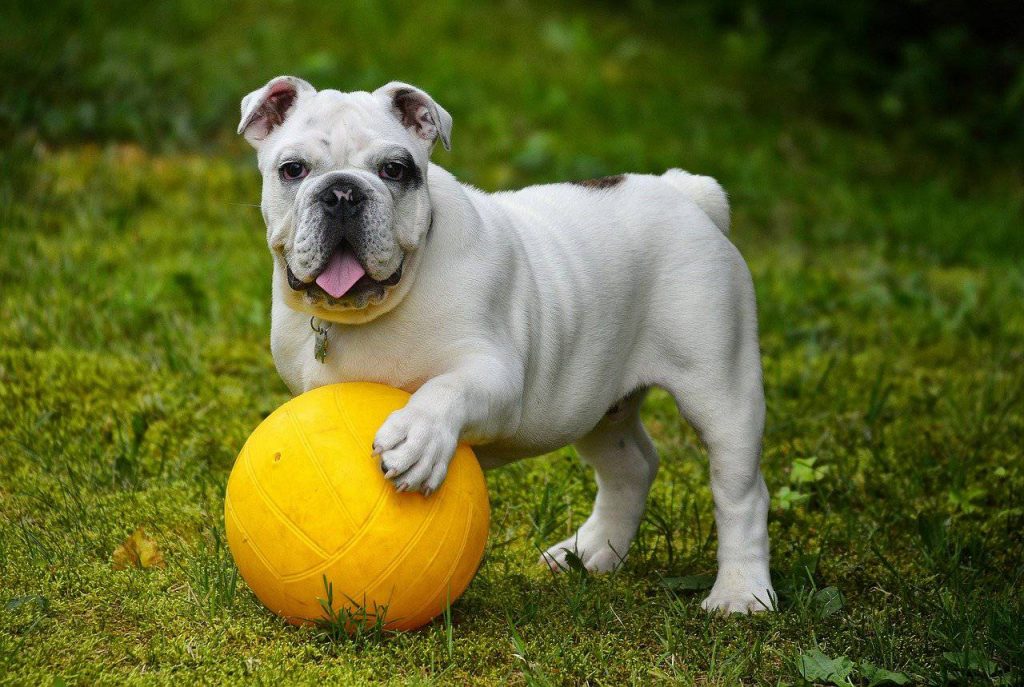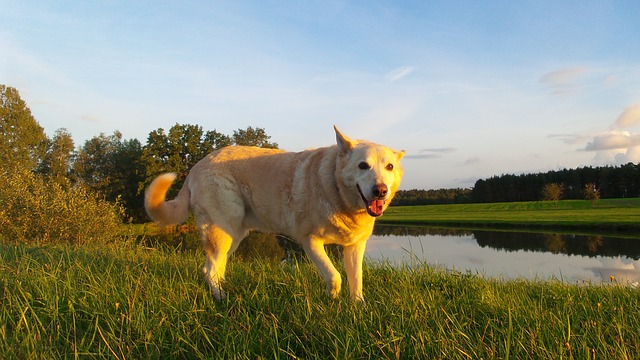Tumor in dogs is one of the most common diseases in four-legged friends. What types of tumor diseases are there? What are typical signs and symptoms of tumors in dogs? What can you do as a dog owner and what are effective treatment methods? In this article, you will find the right answers to the most important questions about tumors in dogs.
Types of tumors – Where does a tumor develop in dogs?

Tumors can appear in a variety of places on the dog’s body and are classified according to where they appear. The so-called solitary tumors only appear in one place, multicentric tumor types are distributed over several places in the dog’s body. Benign tumors usually do not form metastases, while malignant tumors tend to spread through metastases, just as they tend to grow through foreign tissue, making surgical removal very difficult or even impossible.
The most common places where tumors occur in dogs:
- On the mammary glands (also called mammary tumors)
- On the skin
- On the genitals
- In the stomach or intestines or in the digestive system
- In the ears
- In organs such as the liver or pancreas
- On the skeleton
- In the nervous or blood system
The prefixes of the diagnosed tumor names indicate the location of the tumor in the body, while the ending of the name indicates whether a tumor is benign or malignant. The suffix -om usually denotes benign tumors. Designations ending in -sarcoma or -carcinoma are malignant tumors in the tissue.
Which dog breeds are particularly affected?
From a statistical point of view, some dog breeds are particularly frequently affected by tumor diseases. These include the Golden Retriever and the Doberman.
Tumor in the dog – typical signs and symptoms
The most noticeable symptom of an existing disease is the tumor itself, which often remains the only symptom. Especially when it comes to non-cancerous, so-called benign tumors, there are usually no further changes to be found in the dog. Malignant diseases, in which the detected tumor is usually one of several symptoms, usually occur hand in hand with other symptoms.
In such a case, the following accompanying symptoms can occur:
- Epileptic seizures and loss of motor skills
- Bleeding from a body opening (mouth, ears, anus)
- Pains
- Tiredness/ listlessness
- Fever
- Swollen lymph nodes
- Loss of appetite accompanied by weight loss
If a change in the tissue occurs, this change should always be presented to a veterinarian. A diagnosis should be made as quickly as possible, especially if one or more of the symptoms mentioned above are present. In this way, any necessary treatment can be carried out as quickly as possible before the disease spreads further in the dog’s body, and in the end, it may no longer be possible to contain it. The symptoms listed above can also occur in connection with other diseases and do not necessarily mean that a dog is diagnosed with cancer.
How do you recognize a tumor in a dog?

External tumors are visually and tactilely recognizable to the dog owner. They usually appear as lumps and resemble swellings that do not go away. Other accompanying symptoms can also reveal the presence of a tumor that cannot be seen with the naked eye.
Tumor diseases in dogs
The three most common types of tumor diseases in dogs are mouth, skin and mammary gland tumors. The latter are also called mammary tumors. At the same time as these are the most common types of tumors, they are also the ones that are most easily recognized by the dog owner. Internal and invisible tumors can usually not be identified and discovered by the layperson.
Mammary gland tumors/ mammary tumors
This is particularly common in bitches that are not spayed. They are caused by an imbalance in hormones. If a bitch’s heat is suppressed by the administration of medication, for example, the probability of developing mammary tumors as a result of these medications increases significantly. Castration before a bitch’s first heat can minimize the risk of this type of tumor formation.
According to studies, the chance of tumors in the mammary glands in this case is only 0.5%. In Germany, however, this procedure has so far been very unusual, since many dog owners do not want to have their animals neutered purely as a precautionary measure. Approximately half of all tumors that occur on a bitch’s mammary glands are malignant and tend to spread widely, i.e. to form many metastases. This type of tumor can usually only be combated by surgical intervention.
Skin tumors
The skin, the body’s largest organ, is also very frequently affected by tumors. However, skin tumors are usually easily recognized by the dog owner and, above all, early on, which can promote complete healing. Not every tumor found on the skin is automatically malignant, there are also many benign skin tumors. If a change in the skin tissue is determined by the owner and the veterinarian, a biopsy of the tumor is carried out.
This means that a tissue sample is taken from the tumor with the help of a syringe and examined in a laboratory. Here it can now be determined whether it is benign or malignant tissue. Depending on what kind of tumor is present, the type of treatment must then be adapted to the test result. Warts are also skin tumors. However, they are always benign, are transmitted via a viral disease, and are usually only an optical defect without involving any further impairment of the dog and its well-being.
Some dog breeds, such as the Cocker Spaniel and the Poodle, are more often affected by so-called basal cell tumors, which mainly occur on the dog’s head and neck. They are benign and can easily be surgically removed if they bother the owner.
Lipomas are benign skin tumors that appear in fatty tissue. Older dogs in particular are often affected by lipomas. Surgical removal of such a lipoma is usually only necessary if the location of the tumor restricts the dog’s movement. There are several other types of skin tumors that can only be diagnosed and classified by a veterinarian. In the case of malignant skin tumors, two to three centimeters of the surrounding healthy tissue should always be removed in order to really eliminate all malignant cells and prevent the disease from returning.
Oral cavity tumors
Oral cavity tumors belong to the tumors of the gastrointestinal tract or the entire digestive system. Most owners find such tumors because the affected dog no longer eats properly or suffers excessively from bad breath. The most common type of tumor in the oral cavity is malignant melanoma. These are malignant and tend to metastasize to organs, lymph nodes, or even the lungs. You can usually recognize them by their dark color. If a dog is affected by such a malignant melanoma, a combination of surgery and chemotherapy is usually used to ensure optimal treatment.
The so-called squamous cell carcinomas are usually bright red and slightly bloody. They are more common in older dogs and grow in a highly invasive manner. These tumors also have to be surgically removed and the surrounding tissue then irradiated.
Two other types of oral cavity tumors are fibrosarcomas and epulids, the latter usually being benign, not spreading, and easily removed. Fibrosarcomas are more common in large dog breeds and especially in male dogs. They affect the gums and lining of the mouth and can grow very large, making them extremely restrictive. If caught early, they can be attacked by surgery and radiation. For early detection of oral cavity tumors, every dog owner should regularly inspect their dog’s mouth and teeth at home and have a comprehensive check by the veterinarian once or twice a year.
Tumors of the internal organs, the nervous system, the skeleton or other parts of the body are difficult or impossible to detect from the outside. These are usually only discovered when there is a comprehensive examination including X-ray and/or MRI due to other worrying symptoms.
Is a dog tumor hard or soft?

There are both soft and hard tumors that can occur in dogs. Tumors are often rather soft and can easily be moved by hand. This is especially common with skin tumors. Any type of change found, whether soft or hard, should be checked out by a vet to be on the safe side.
What can the dog owner do?
First of all, a dog owner should always keep a close eye on his dog and its condition in order to be able to identify possible symptoms or tumors at an early stage. Time is an important factor, especially in the case of malignant tumors, which decides whether a dog can recover from the disease – or, in the worst case, even die from it. If the owner notices any abnormalities, he should not panic unnecessarily at first, but make an appointment with the treating veterinarian as soon as possible to have the changes clarified.
There are almost no preventive measures to avoid a tumor. Early castration can help with tumors whose formation is linked to hormones. These include, for example, mammary tumors or testicular tumors. Since the risk of tumor diseases is higher in old dogs than in young ones, they should be presented to the vet more often.
Far away from these (few) possibilities, it always helps a sick animal to feel the closeness and love of its trusted owners and to know the safety of its “pack” around it. Whether good care, warmth, attention, and love really help prevent the formation of tumors has not been scientifically proven. Nevertheless, the mental condition of an animal always plays into the physical condition.
How long can a dog live with a malignant tumor?
The respective prognosis for the remaining time that remains for a dog with an untreatable, malignant tumor is highly individual.
Tumor in the dog – effective treatment methods
The type of treatment depends on the type and severity of the tumor. Basically, there is the possibility of surgical intervention, radiation, or chemotherapy. For tumors that have attacked and become heavily intertwined with surrounding tissue, it may be possible to surgically remove only part of the diseased tissue because otherwise too much of the surrounding tissue would have to be removed as well. Here, the method of radiation is usually also used, which is intended to rid the affected tissue of the malignant cells.
But even benign tumors can, in case of doubt, be so unfavorably located that surgical removal is too risky. Important adjacent organs could be damaged or a large blood vessel could be injured, which would cause the dog to bleed to death.
Some tumors lying on the skin can also be easily and minimally invasively removed by freezing or using a laser. Benign forms of tumors, which grow very slowly and may already be detected when the dog is old, sometimes do not need to be treated at all. In this case, the dog will likely die of natural causes before the tumor has reached a dangerous or disabling size. In the worst case, it may be necessary to put the sick animal to sleep and relieve it of its suffering. Inoperable and highly invasive tumors that are widespread in the body and are only noticed at a late stage can make such a difficult step necessary. In general, however, there are a wide range of treatment options and a tumor or cancer diagnosis does not necessarily mean the death of a dog.
Can a dog tumor burst?
Yes, a tumor in a dog can burst or rupture. In such a case, the dog must be taken to a veterinarian or an animal hospital immediately, as the bursting of the tumor is a life-threatening situation for the dog.
The healing process after successful treatment

Depending on the severity of the tumor and the way it is treated, how the owner and dog live together after the treatment is also shaped. In the case of a surgical procedure, the stitches must be removed a while after the operation and the wound must be checked by a doctor. It may be necessary to change the dressing, which can sometimes be carried out by the owner at home under the guidance of the veterinarian.
Radiation and chemotherapy can be very debilitating and stressful to a dog’s body. In any case, after a treatment such as chemotherapy, your dog will first need rest and refrain from excessive exercise for a while. Supporting the immune system after therapy with a balanced diet is well suited to boosting the self-healing of the animal’s body. Love and affection are also good for the dog’s soul and ensure good healing and allow dogs to forget the pain a little.
In addition, if your dog has already been treated for a tumor disease, you should have the blood values checked regularly and pay more attention to symptoms that could indicate a return of the disease. Cuddling with the dog can be used to carefully examine the body for changes. If the dog is completely fit again after the treatment and has the permission of the vet to lead its normal life again, nothing stands in the way of romping around together.





























